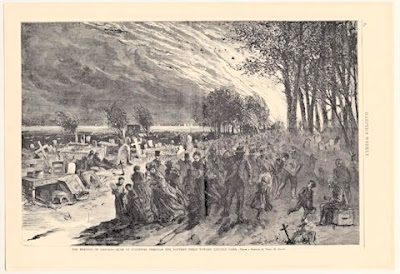This reprint is from May
18, 2015. At the time I was actively involved with the Indiana Writers’
Consortium, which has since disbanded.
Thinking Outside the
Stage
I spent three hours on
Saturday at a playwriting workshop. No, I’m not thinking about writing plays,
but learning about one genre can provide insights into another. And venturing
out of my comfort zone stretches my creative muscles for what I do write.
Besides, Saturday’s
workshop was excellent. Hosted by the Indiana Writers’ Consortium, it featured
playwright Evan Guilford-Blake and focused on adapting prose for the stage and adapting
plays to prose form.
One thing I learned, or
at least was reminded of, is that writers shouldn’t assume a story has to be
told a certain way. After describing some initial principles, Evan had us do
two exercises. In the first, we were given either the play or the prose version
of a short piece he wrote and had already adapted. Then he asked us to rewrite
it as the other type. I had the play version and turned it into a prose story,
mostly by adding descriptions of the setting and changing the first character’s
onstage monologue into thoughts. But some of the other participants were much
more creative.
Before I continue, you
need a little of the plot. The two-character play opens with a man nervously waiting
for a woman he “met” through a dating service, but this is their first
in-person meeting. When our working time was up, Evan started with those of us
who turned the play into prose and asked which character’s point of view we had
used. My first thought was, “his, of course, because she wasn’t in the scene at
the beginning.” But one of the other participants did use the woman’s. He got
around the POV problem by placing her in the scene from the beginning, but with
a twist. She was hiding where she could check out the man before deciding
whether she wanted to meet him. It was an inspired approach that had never
entered my mind.
One of the people who
turned the story into a play had backed up and added a new scene at the
beginning. It still showed how nervous the man was but started at his apartment
as he was getting ready for the date. This participant had also thought outside
the box (or the stage) rather than just making the most obvious changes.
The main lesson I learned
from Saturday’s workshop was to try something new. Experiment. If it doesn’t
work, I don’t have to keep it. But if it does, it can take a good story and
make it a great one.
And that should be every
writer’s goal.












